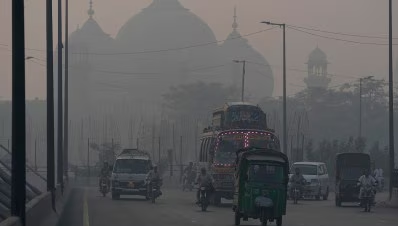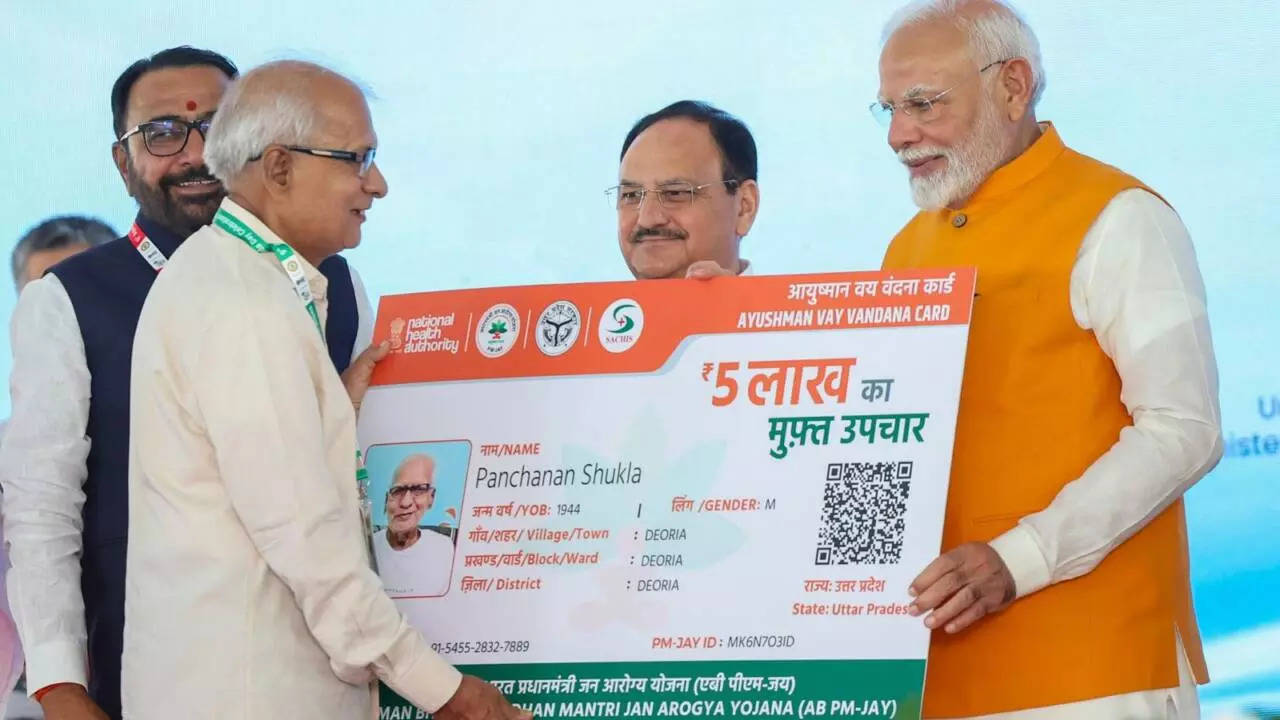A cross sectional population based survey from 31 states and union territories of the country has found the prevalence of major metabolic non-communicable diseases like diabetes, hypertension, high cholesterol, obesity and prediabetes.
The study by the Indian Council of Medical Research–India Diabetes (ICMR-INDIAB), is published in the The Lancet Diabetes and Endocrinology journal. This is said to be the largest survey on diabetes and other metabolic non-communicable diseases undertaken in India.
The study was held between Oct 18, 2008 and Dec 17, 2020.
Prevalence of diabetes and prediabetes is 11.4% and 15.3% respectively
For the study, the researchers studied a total of 1,13,043 individuals, more than 75,000 of which were from rural areas. It found that 136 million in the country prediabetic, 101 million already dealing with it.
It also found that the national prevalence of hypertension is 35.5%, overall obesity is 28.6%, abdominal obesity is 39.5% and hypercholesterolemia is 24%.
While Puducherry has been found to have the highest prevalence of obesity, Sikkim and Goa have the highest prevalence of prediabetes and diabetes, respectively.
With more than 50% prevalence, Kerala has the highest number of people with high cholesterol.
The prevalence of diabetes was based on Oral glucose tolerance tests (OGTT), the researchers said, citing national guidelines which do not recommend the use of HbA1c as the sole diagnostic criterion for diabetes and prediabetes.
Central and northeastern regions have lower prevalence of diabetes
The study found that diabetes prevalence was the highest in the southern and northern regions of India, with urban areas having high prevalence throughout.
However, a reverse in the pattern was observed for prediabetes. “Prevalence of prediabetes was the highest in the central and northern regions of India and lowest in Punjab, Jharkhand, and some parts of the northeastern region. The prevalence of prediabetes was not significantly different between urban and rural areas,” it found.
Diabetes epidemic is rising
“The prevalence of diabetes and other metabolic NCDs in India is considerably higher than previously estimated. While the diabetes epidemic is stabilizing in the more developed states of the country, it is still increasing in most other states. Thus, there are serious implications for the nation, warranting urgent state-specific policies and interventions to arrest the rapidly rising epidemic of metabolic NCDs in India,” the researchers have said.
Are you getting enough of THESE heart-friendly minerals?
“With dedicated and commendable efforts by the members of MDRF, we have successfully been able to assess the rise in NCDs like obesity, Hypertension and Diabetes which definitely affects millions across the globe. Our study results have multiple implications for the planning and provision of health care in India. State governments in India, who are primarily in charge of providing healthcare in their respective regions, will be especially interested in the detailed state-level data on these NCDs as it will allow them to develop evidence-based interventions to successfully halt the progression of NCDs and manage their complications,” said Dr.V.Mohan, Chairman, Dr.Mohan’s Diabetes Specialities Centre (DMDSC) and Madras Diabetes Research Foundation (MDRF) and senior author of the study.
Noncommunicable diseases (NCDs) kill 41 million in a year: WHO
The relevance of study can be through the data released by the World Health Organisation (WHO) in September 2022. In its report, the WHO had said that non-communicable diseases kill 41 million in a year and had listed diabetes as one of the major cardiometabolic risk factors.
Among the other risk factors are raised blood pressure, obesity and high cholesterol. The current study has found the prevalence of these risk factors in India. “Our study estimates that in 2021, in India there are 101 million people with diabetes and 136 million people with prediabetes, 315 million people had high blood pressure, 254 million had generalized obesity, and 351 million had abdominal obesity. Additionally, 213 million people had hypercholesterolaemia,” the study has found.
“These results have multiple implications for the planning and provision of health care in India,” the researchers have said and have highlighted the chronic complications of diabetes few of which are cardiovascular diseases, kidney, foot and eye disease.
The researchers have also stressed on the cost of treatment.
The study by the Indian Council of Medical Research–India Diabetes (ICMR-INDIAB), is published in the The Lancet Diabetes and Endocrinology journal. This is said to be the largest survey on diabetes and other metabolic non-communicable diseases undertaken in India.
The study was held between Oct 18, 2008 and Dec 17, 2020.
Prevalence of diabetes and prediabetes is 11.4% and 15.3% respectively
For the study, the researchers studied a total of 1,13,043 individuals, more than 75,000 of which were from rural areas. It found that 136 million in the country prediabetic, 101 million already dealing with it.
It also found that the national prevalence of hypertension is 35.5%, overall obesity is 28.6%, abdominal obesity is 39.5% and hypercholesterolemia is 24%.
While Puducherry has been found to have the highest prevalence of obesity, Sikkim and Goa have the highest prevalence of prediabetes and diabetes, respectively.
With more than 50% prevalence, Kerala has the highest number of people with high cholesterol.
The prevalence of diabetes was based on Oral glucose tolerance tests (OGTT), the researchers said, citing national guidelines which do not recommend the use of HbA1c as the sole diagnostic criterion for diabetes and prediabetes.
Central and northeastern regions have lower prevalence of diabetes
The study found that diabetes prevalence was the highest in the southern and northern regions of India, with urban areas having high prevalence throughout.
However, a reverse in the pattern was observed for prediabetes. “Prevalence of prediabetes was the highest in the central and northern regions of India and lowest in Punjab, Jharkhand, and some parts of the northeastern region. The prevalence of prediabetes was not significantly different between urban and rural areas,” it found.
Diabetes epidemic is rising
“The prevalence of diabetes and other metabolic NCDs in India is considerably higher than previously estimated. While the diabetes epidemic is stabilizing in the more developed states of the country, it is still increasing in most other states. Thus, there are serious implications for the nation, warranting urgent state-specific policies and interventions to arrest the rapidly rising epidemic of metabolic NCDs in India,” the researchers have said.
Are you getting enough of THESE heart-friendly minerals?
“With dedicated and commendable efforts by the members of MDRF, we have successfully been able to assess the rise in NCDs like obesity, Hypertension and Diabetes which definitely affects millions across the globe. Our study results have multiple implications for the planning and provision of health care in India. State governments in India, who are primarily in charge of providing healthcare in their respective regions, will be especially interested in the detailed state-level data on these NCDs as it will allow them to develop evidence-based interventions to successfully halt the progression of NCDs and manage their complications,” said Dr.V.Mohan, Chairman, Dr.Mohan’s Diabetes Specialities Centre (DMDSC) and Madras Diabetes Research Foundation (MDRF) and senior author of the study.
Noncommunicable diseases (NCDs) kill 41 million in a year: WHO
The relevance of study can be through the data released by the World Health Organisation (WHO) in September 2022. In its report, the WHO had said that non-communicable diseases kill 41 million in a year and had listed diabetes as one of the major cardiometabolic risk factors.
Among the other risk factors are raised blood pressure, obesity and high cholesterol. The current study has found the prevalence of these risk factors in India. “Our study estimates that in 2021, in India there are 101 million people with diabetes and 136 million people with prediabetes, 315 million people had high blood pressure, 254 million had generalized obesity, and 351 million had abdominal obesity. Additionally, 213 million people had hypercholesterolaemia,” the study has found.
“These results have multiple implications for the planning and provision of health care in India,” the researchers have said and have highlighted the chronic complications of diabetes few of which are cardiovascular diseases, kidney, foot and eye disease.
The researchers have also stressed on the cost of treatment.










